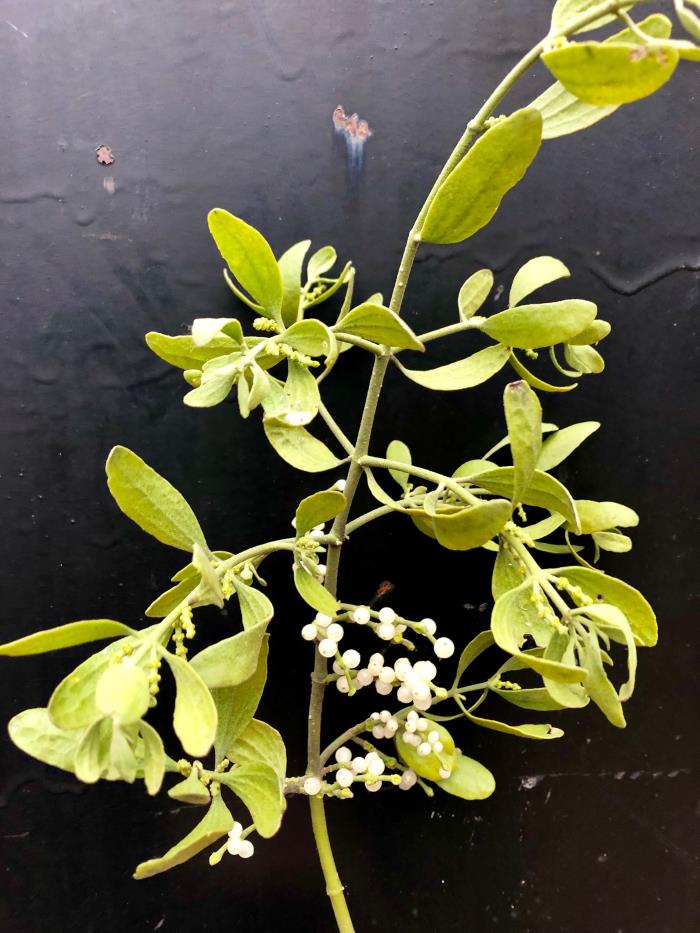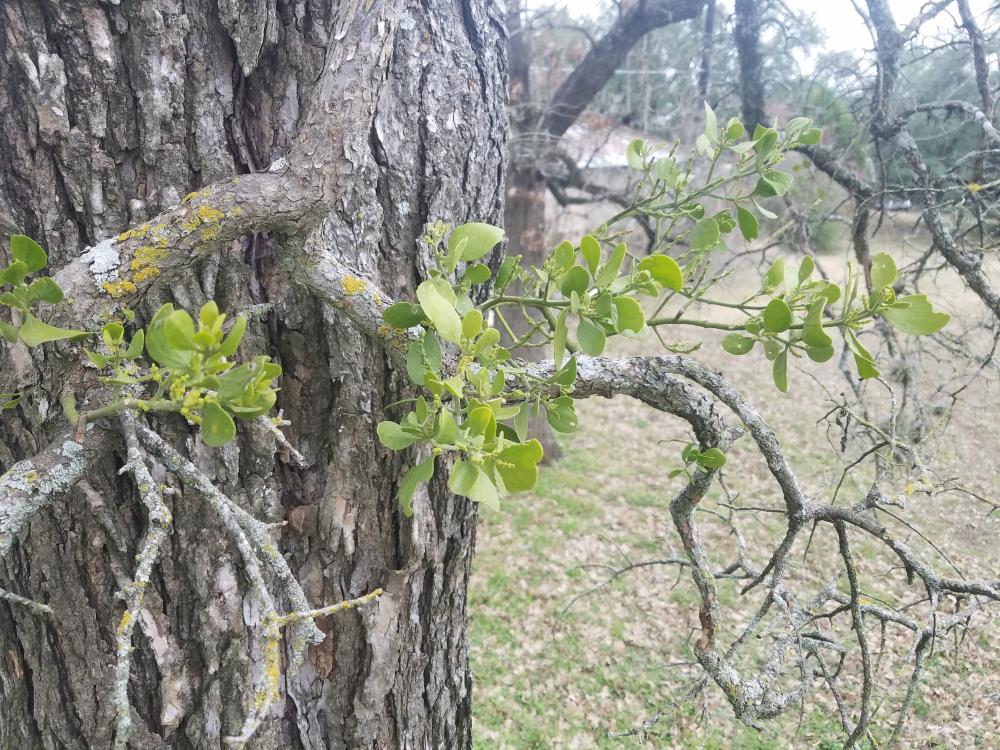With the Holidays behind us and winter in full swing, you may notice up in various trees a few remaining sprigs of green in an otherwise leafless canopy. There may even be clusters of white berries to be seen on these patches of outgrowth and if any of your Christmas memories survived the spiked eggnog you will recognize the plant as the much-celebrated Mistletoe.
Ah yes, the harbinger of happiness, the spreader of cheer, and the herald of glad tidings! The intrigue of an obligatory kiss, the last nail on which the lonely hang their romantic hopes… But the truth about the Mistletoe may be far from cheery. Behind the evergreen mask and traditional trappings, a tree killer hides.
Let me wash the drivel out with some facts.
Fact One: It’s a parasite. Yes indeed, the mistletoe infects trees by growing into its host and stealing nutrients and water directly from the cambium layer.
Fact Two: It spreads its seeds through bird poop. In fact, the name Mistletoe is derived from the Old English words for “Poop twig”. Feeling romantic now?
Fact three: Mistletoe hurts trees. It is never helpful to the host and in many cases if left unchecked it can be fatal to the tree.
Fact four: It continues sapping the host all winter long, this is how it remains green throughout the year. In other words, it kills trees while they are sleeping.
Fact five: Even Cacti are not immune from a Mistletoe attack, with several species being affected.
Fact six: If the Grinch had a favorite plant it would certainly be the Mistletoe.
With all these shocking facts out in the open now, you may be quite alarmed if you were to see some in your trees.

How worried should you be about Mistletoe in your trees?
As tree service specialists we encounter Mistletoe almost every day. Fortunately, the cases that we see the most are very mild infections that can easily be controlled with proper pruning. Mistletoe is a very slow growing plant and spreads through a canopy fairly slow as well. The most common trees to be infected here in Central Texas are Cedar Elm, Hackberry and Red Oak.
There are over one thousand varieties of Mistletoe however, and many other tree species can be affected. Only if neglected for many years can a parasitic plant infection become a serious threat to a tree. Several other signs of decline will manifest before then, making a sudden tree loss to Mistletoe unheard of.

How to combat Mistletoe.
The most effective and efficient way of control is to prune affected branches entirely. It is also possible to surgically cut out infected sites on the trunk if it is present there, although I would highly recommend consulting an experienced arborist to avoid unnecessary wounds to your tree. It is also a common practice to simply prune off the Mistletoe once or twice a year and let it be otherwise. It takes several years of growth for Mistletoe to flower and seed, so regular trimming does prevent the spread of the pesky plant.
To summarize, with the occasional pruning and proper tree care, your trees are unlikely to be gravely affected by Mistletoe. I feel like I should also mention some of the positives about the now maligned Mistletoe. So here are some bonus facts.
- Some studies suggest that Mistletoe may be effective in the treatment of various cancers.
- Mistletoe is a known food staple for many song birds and whole bird populations depend on the winter berries to survive until spring.
- It also makes for a convenient nesting site and shelter for many birds and animals, it is very common for squirrels to nest in Mistletoe for instance.
- Reportedly, some folks really have met the love of their life under a Mistletoe.








